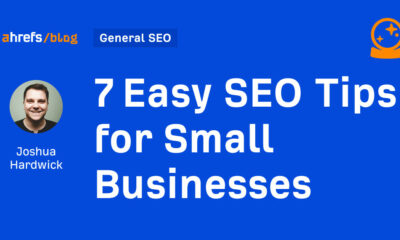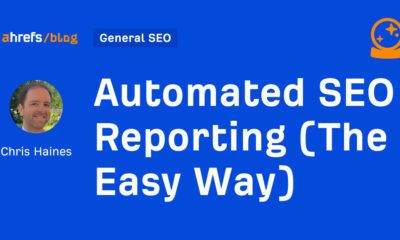MARKETING
How to Host One in 7 Easy Steps
Influencer marketing is a trendy topic these days, but it doesn’t require a lot of work or a ton of money to harness the power of influencers on your brand’s social media channels — and hosting something called an Instagram takeover is one of the lowest-effort, most organic ways to do just that.
Not sure what we’re talking about? Instagram takeovers involve a person or brand posting on your Instagram channel to give followers a peek at new and unique content from another perspective. Here’s an example of our friends at WeWork taking over our Instagram account:
In this post, we’ll dive into how to host your own Instagram takeover to drive engagement, brand awareness, and positive outcomes for your brand.
What’s an Instagram Takeover?
An Instagram takeover is when someone temporarily takes over another Instagram account to share original content and engage with that account’s audience. The most common Instagram takeovers are ones where an influencer or celebrity takes over a brand’s account.
But there are several different approaches to Instagram takeovers that can be beneficial to your brand.
Other types of Instagram takeovers can include:
- Employee takeovers
- Customer or community member takeovers
- Event takeovers
- Product or offer promotions
Instagram takeovers are mutually beneficial for the guest Instagrammer and the host account. The host can bring valuable new content to their followers without having to create it themselves, and the guest is able to reach an entirely new audience by posting on another account.
Plus, Instagram takeovers help cultivate good-faith relationships between influencers that can create inroads for future collaboration and cross-promotion.
Now, let’s dive into how to get started with your Instagram takeover.
How to Host an Instagram Takeover
1. Choose what you want to accomplish.
Before choosing a guest to host your brand’s Instagram, you have to determine what you want to achieve with the takeover. Ideally, your Instagram takeover will achieve multiple positive results — but choosing a primary goal of the campaign will help determine which type of guest to invite.
Instagram takeover goals could include:
- Increasing brand awareness. This can be measured by the number of new followers the Instagram account gains as a result of the takeover.
- Promoting a product, event, or offer. This can be measured by the number of event registrations, offer redemptions, or lead form submissions as a result of the takeover.
- Driving engagement within the Instagram community. This can be measured by the number of likes, comments, video and story views, and link clicks as a result of the takeover.
2. Pick your guest Instagrammer.
Now that you know your goal, you’ll have an easier time finding a guest who can make it happen.
For example, the team behind the award-winning musical Hamilton wanted to familiarize fans with the plays revolving cast members.
To do this, Hamilton started #SwingSaturday on Instagram in which a cast member who is prepared to play multiple roles (known as a swing) takes over the official Hamilton Instagram.
There are a few types of guest Instagrammers you can invite to create content for your takeover:
- Influencers within your industry
- Employees at your company
- Community members or customers
While it’s certainly possible for Instagram takeover guests to accomplish multiple goals, we recommend choosing your guest with the most effective strategy in mind.
- Influencers will draw their followers to your Instagram with their endorsement of your brand, so they’re the best fit if your primary goal is to increase brand awareness by growing followers.
- Employees will attract interest from their friends and colleagues who want a behind-the-scenes look at what they do at work every day. They’re the best fit if your primary goal is to drive engagement on Instagram.
- Community members and customers will post enthusiastically about your brand and show the value of your product. They’re the best fit if your primary goal is to promote a product, event, offer, sign-up, or download.
Again, these goals aren’t mutually exclusive. Ideally, the content your guest creates will be highly engaging, shareable, and compelling to the viewer.
3. Decide on the content format and takeover logistics.
Once you’ve figured out what you want to accomplish and who will host your takeover, it’s time to nail down the specifics of how the takeover will run. Below are our suggestions of questions to answer when you meet with your takeover host:
- When are you hosting the Instagram takeover, and how long will it last?
- Who will manage the account? Will the guest get access to your Instagram credentials, or will they send you content and captions to post on their behalf?
- How many times per day will the host post takeover content? If you have an optimal publishing schedule in mind, what times per day will the host need to post?
- What hashtags will be used? Will you create a custom hashtag to promote the takeover? Is there a maximum amount of hashtags you want the guest to use in any given caption?
- Which types of content will be shared during the takeover? Will the guest post photos, videos, Instagram Stories, or live videos? Will they post a combination of these formats?
- How will both the guest and the host promote the takeover on Instagram? Will you agree to promotion on Instagram or other channels leading up to the event?
- Are there any guardrails? Is there anything the guest shouldn’t record or mention over the course of the takeover?
Once the details of the takeover are finalized, decide how you’ll measure success over the course of the event.
4. Determine metrics to track during the takeover.
Depending on the goals of your Instagram takeover, some of these metrics will be more important than others. Below are the metrics we recommend tracking over the course of your takeover:
- # of new followers
- # of likes
- # of comments
- # of mentions
- # of direct messages
- # of Instagram Story views
- # of live video viewers
- # of Instagram Story clicks
- # of offer redemptions/app downloads (if you promote a landing page)
- # of attendees or sign-ups (if you promote an event)
- Total social referral traffic to your website
Qualitative metrics to keep track of could also include positive comments on Instagram.
5. Promote the takeover across multiple platforms.
Once you’ve figured out the details of your Instagram takeover, it’s time to start getting people excited about it.
A day or two before the event, start promoting your upcoming Instagram takeover. If there are any contests, giveaways, or other incentives for people to follow along, make those clear in your promotions.
Of course, you need to promote the upcoming takeover on Instagram — especially if the takeover is happening within Instagram Stories or Instagram Live and you want to drive visitors to view those spots within the app.
However, you also need to promote the takeover on other social media channels to attract as many people to your campaign as possible. This is especially necessary if your brand’s Instagram account isn’t as developed or engaged as other channels.
The host and the guest should promote the takeover on a few of their channels leading up to the event to get both audiences as engaged and excited as possible.
6. Launch the takeover.
On the day of the takeover, it’s all systems go.
Make sure you have one team member monitoring comments and one team member uploading content to Instagram (if applicable). Remember, users can now upload content from desktop computers in addition to the mobile app, which can make the process easier from the office.
Throughout the day, cross-promote content that the guest is posting on their channels to help draw new people to your own Instagram takeover event.
Make sure to communicate when the takeover is starting and ending. Note in captions when the first and last posts are happening so viewers aren’t confused or abruptly left in the lurch, wondering if there’s more content forthcoming.
7. Analyze the results.
Once the takeover is over, it’s time to analyze its performance. Use the performance data from the takeover to determine how (or if) you’ll do your next takeover differently. Here are some questions to ask in your post-takeover analysis:
- Did we achieve our goal? Did you earn more Instagram followers, achieve high levels of engagement, or get visitors to sign up for your offer?
- Did we achieve secondary goals? Did the takeover result in other net benefits for your brand and your business?
- Was the takeover worthwhile? Did it save you time and energy creating your own content, or did it create extra work? Did it drive a push of traffic and engagement, or did numbers remain mostly the same?
Even if the takeover doesn’t drive hard numbers for your business’s bottom line, takeovers are authentic and real. They also provide an inside look at an aspect of your brand or community followers don’t normally see.
And just because a takeover didn’t achieve your desired results on the first launch it doesn’t mean you shouldn’t give it another try later. That’s why you need to track its progress and results so that you can do better next time.
Social media is about being social, so pay attention to qualitative feedback, too. If commenters respond positively to the takeover, take their feedback and use it for ideating future Instagram campaigns.
Instagram Takeover Examples
Here are examples of some excellent Instagram takeovers:
1. Broadway Plus
To promote its brand to Broadway fans, Broadways Plus had Hadestown actress Kimberly Marable takeover the company’s Instagram stories. The takeover was promoted the day before by sharing a clip of Kimberly and the rest of the cast singing during an NPR Tiny Desk concert.
During the takeover, Marable shared exclusive behind-the-scenes footage of the Hadestown tour and gave followers of the account a glimpse into the day in the life of a Broadway performer. This worked in Marable’s favor as well because doing so promoted the Hadestown tour to more Broadway fans.
What I Like About This Instagram Takeover
This takeover provided timely and relevant content to fans of Broadway by having a prominent star give an exclusive look into a current tour. Marable was able to share content that only she would have access to, making the takeover that much more valuable.
2. Fenty Beauty
Celebrity makeup artist Nina Ubhi took over cosmetics brand Fenty Beauty’s Instagram account stories in 2020. The goal was to show how makeup lovers can use brand’s products to achieve the perfect spring look.
During the takeover, Ubhi gave quick makeup tutorials using Fenty Beauty products while also showcasing her skills as a makeup artist.
What I Like About This Instagram Takeover
This takeover brings value to both current and potential Fenty Beauty customers. Not only did Ubhi promote the brand’s products, but followers of the account learned how to apply the makeup and create new looks.
3. Billboard
As we mentioned before, an Instagram takeover can be just as beneficial for the guest as it is for the host. For example, the boy band Why Don’t We promoted their music and tour by taking over Billboard magazine’s Instagram account. During the takeover, the band shared behind-the-scenes tour footage and live-streamed portions of their concerts.
What I Like About This Instagram Takeover
The takeover was a treat for general music fans as well as fans of the band thanks to the exclusive content and concert performances. The live-streamed concerts from the band’s performances especially created an immersive experience for Billboard followers.
4. MS Association of America
To raise awareness for multiple sclerosis, the MS Association of America had actress Selma Blair take over the association’s Instagram to share her experience with the disease. During the takeover, Blair read an excerpt from her autobiography “Mean Baby: A Memoir of Growing Up” that details how MS has impacted her life.
What I Like About This Instagram Takeover
Having a celebrity living with MS be the guest for the takeover was a great way to raise awareness of the disease. The videos of Blair reading excerpts from her book gave a personal touch that provided insight and stirred emotions from followers.
5. ASOS
Online clothing store ASOS teamed up with Neom Organics by having the organic beauty line company takeover the ASOS Instagram account. This showed ASOS customers that Neom is available at the online retailer and it introduced Neom Organics to a new audience.
What I Like About This Takeover
This is another great example of mutually beneficial takeover for both the guest and host. ASOS showed its range as an online retailer but showing that it sells more than just clothes and accessories — customers can also turn to the company for skincare needs as well.
At the same time, Neom Organics used the opportunity to promote its products, reach new potential leads, and provide information on where its products can be found — at ASOS.
And there you have it — a helpful checklist to launch a successful Instagram takeover and five examples to inspire you. For more ideas on how to drive results for your brand, follow us on Instagram, and download our guide to Instagram for business here.
Has your brand ever hosted an Instagram takeover? Share with us in the comments below.
MARKETING
Ecommerce evolution: Blurring the lines between B2B and B2C

Understanding convergence
B2B and B2C ecommerce are two distinct models of online selling. B2B ecommerce is between businesses, such as wholesalers, distributors, and manufacturers. B2C ecommerce refers to transactions between businesses like retailers and consumer brands, directly to individual shoppers.
However, in recent years, the boundaries between these two models have started to fade. This is known as the convergence between B2B and B2C ecommerce and how they are becoming more similar and integrated.
Source: White Paper: The evolution of the B2B Consumer Buyer (ClientPoint, Jan 2024)
What’s driving this change?
Ever increasing customer expectations
Customers today expect the same level of convenience, speed, and personalization in their B2B transactions as they do in their B2C interactions. B2B buyers are increasingly influenced by their B2C experiences. They want research, compare, and purchase products online, seamlessly transitioning between devices and channels. They also prefer to research and purchase online, using multiple devices and channels.
Forrester, 68% of buyers prefer to research on their own, online . Customers today expect the same level of convenience, speed, and personalization in their B2B transactions as they do in their B2C interactions. B2B buyers are increasingly influenced by their B2C experiences. They want research, compare, and purchase products online, seamlessly transitioning between devices and channels. They also prefer to research and purchase online, using multiple devices and channels
Technology and omnichannel strategies
Technology enables B2B and B2C ecommerce platforms to offer more features and functionalities, such as mobile optimization, chatbots, AI, and augmented reality. Omnichannel strategies allow B2B and B2C ecommerce businesses to provide a seamless and consistent customer experience across different touchpoints, such as websites, social media, email, and physical stores.
However, with every great leap forward comes its own set of challenges. The convergence of B2B and B2C markets means increased competition. Businesses now not only have to compete with their traditional rivals, but also with new entrants and disruptors from different sectors. For example, Amazon Business, a B2B ecommerce platform, has become a major threat to many B2B ecommerce businesses, as it offers a wide range of products, low prices, and fast delivery
“Amazon Business has proven that B2B ecommerce can leverage popular B2C-like functionality” argues Joe Albrecht, CEO / Managing Partner, Xngage. . With features like Subscribe-and-Save (auto-replenishment), one-click buying, and curated assortments by job role or work location, they make it easy for B2B buyers to go to their website and never leave. Plus, with exceptional customer service and promotional incentives like Amazon Business Prime Days, they have created a reinforcing loyalty loop.
And yet, according to Barron’s, Amazon Business is only expected to capture 1.5% of the $5.7 Trillion addressable business market by 2025. If other B2B companies can truly become digital-first organizations, they can compete and win in this fragmented space, too.”
If other B2B companies can truly become digital-first organizations, they can also compete and win in this fragmented space
Joe AlbrechtCEO/Managing Partner, XNGAGE
Increasing complexity
Another challenge is the increased complexity and cost of managing a converging ecommerce business. Businesses have to deal with different customer segments, requirements, and expectations, which may require different strategies, processes, and systems. For instance, B2B ecommerce businesses may have to handle more complex transactions, such as bulk orders, contract negotiations, and invoicing, while B2C ecommerce businesses may have to handle more customer service, returns, and loyalty programs. Moreover, B2B and B2C ecommerce businesses must invest in technology and infrastructure to support their convergence efforts, which may increase their operational and maintenance costs.
How to win
Here are a few ways companies can get ahead of the game:
Adopt B2C-like features in B2B platforms
User-friendly design, easy navigation, product reviews, personalization, recommendations, and ratings can help B2B ecommerce businesses to attract and retain more customers, as well as to increase their conversion and retention rates.
According to McKinsey, ecommerce businesses that offer B2C-like features like personalization can increase their revenues by 15% and reduce their costs by 20%. You can do this through personalization of your website with tools like Product Recommendations that help suggest related products to increase sales.
Focus on personalization and customer experience
B2B and B2C ecommerce businesses need to understand their customers’ needs, preferences, and behaviors, and tailor their offerings and interactions accordingly. Personalization and customer experience can help B2B and B2C ecommerce businesses to increase customer satisfaction, loyalty, and advocacy, as well as to improve their brand reputation and competitive advantage. According to a Salesforce report, 88% of customers say that the experience a company provides is as important as its products or services.
Market based on customer insights
Data and analytics can help B2B and B2C ecommerce businesses to gain insights into their customers, markets, competitors, and performance, and to optimize their strategies and operations accordingly. Data and analytics can also help B2B and B2C ecommerce businesses to identify new opportunities, trends, and innovations, and to anticipate and respond to customer needs and expectations. According to McKinsey, data-driven organizations are 23 times more likely to acquire customers, six times more likely to retain customers, and 19 times more likely to be profitable.
What’s next?
The convergence of B2B and B2C ecommerce is not a temporary phenomenon, but a long-term trend that will continue to shape the future of ecommerce. According to Statista, the global B2B ecommerce market is expected to reach $20.9 trillion by 2027, surpassing the B2C ecommerce market, which is expected to reach $10.5 trillion by 2027. Moreover, the report predicts that the convergence of B2B and B2C ecommerce will create new business models, such as B2B2C, B2A (business to anyone), and C2B (consumer to business).
Therefore, B2B and B2C ecommerce businesses need to prepare for the converging ecommerce landscape and take advantage of the opportunities and challenges it presents. Here are some recommendations for B2B and B2C ecommerce businesses to navigate the converging landscape:
- Conduct a thorough analysis of your customers, competitors, and market, and identify the gaps and opportunities for convergence.
- Develop a clear vision and strategy for convergence, and align your goals, objectives, and metrics with it.
- Invest in technology and infrastructure that can support your convergence efforts, such as cloud, mobile, AI, and omnichannel platforms.
- Implement B2C-like features in your B2B platforms, and vice versa, to enhance your customer experience and satisfaction.
- Personalize your offerings and interactions with your customers, and provide them with relevant and valuable content and solutions.
- Leverage data and analytics to optimize your performance and decision making, and to innovate and differentiate your business.
- Collaborate and partner with other B2B and B2C ecommerce businesses, as well as with other stakeholders, such as suppliers, distributors, and customers, to create value and synergy.
- Monitor and evaluate your convergence efforts, and adapt and improve them as needed.
By following these recommendations, B2B and B2C ecommerce businesses can bridge the gap between their models and create a more integrated and seamless ecommerce experience for their customers and themselves.
MARKETING
Streamlining Processes for Increased Efficiency and Results

How can businesses succeed nowadays when technology rules? With competition getting tougher and customers changing their preferences often, it’s a challenge. But using marketing automation can help make things easier and get better results. And in the future, it’s going to be even more important for all kinds of businesses.
So, let’s discuss how businesses can leverage marketing automation to stay ahead and thrive.
Benefits of automation marketing automation to boost your efforts
First, let’s explore the benefits of marketing automation to supercharge your efforts:
Marketing automation simplifies repetitive tasks, saving time and effort.
With automated workflows, processes become more efficient, leading to better productivity. For instance, automation not only streamlines tasks like email campaigns but also optimizes website speed, ensuring a seamless user experience. A faster website not only enhances customer satisfaction but also positively impacts search engine rankings, driving more organic traffic and ultimately boosting conversions.
Automation allows for precise targeting, reaching the right audience with personalized messages.
With automated workflows, processes become more efficient, leading to better productivity. A great example of automated workflow is Pipedrive & WhatsApp Integration in which an automated welcome message pops up on their WhatsApp
within seconds once a potential customer expresses interest in your business.
Increases ROI
By optimizing campaigns and reducing manual labor, automation can significantly improve return on investment.
Leveraging automation enables businesses to scale their marketing efforts effectively, driving growth and success. Additionally, incorporating lead scoring into automated marketing processes can streamline the identification of high-potential prospects, further optimizing resource allocation and maximizing conversion rates.
Harnessing the power of marketing automation can revolutionize your marketing strategy, leading to increased efficiency, higher returns, and sustainable growth in today’s competitive market. So, why wait? Start automating your marketing efforts today and propel your business to new heights, moreover if you have just learned ways on how to create an online business
How marketing automation can simplify operations and increase efficiency
Understanding the Change
Marketing automation has evolved significantly over time, from basic email marketing campaigns to sophisticated platforms that can manage entire marketing strategies. This progress has been fueled by advances in technology, particularly artificial intelligence (AI) and machine learning, making automation smarter and more adaptable.
One of the main reasons for this shift is the vast amount of data available to marketers today. From understanding customer demographics to analyzing behavior, the sheer volume of data is staggering. Marketing automation platforms use this data to create highly personalized and targeted campaigns, allowing businesses to connect with their audience on a deeper level.
The Emergence of AI-Powered Automation
In the future, AI-powered automation will play an even bigger role in marketing strategies. AI algorithms can analyze huge amounts of data in real-time, helping marketers identify trends, predict consumer behavior, and optimize campaigns as they go. This agility and responsiveness are crucial in today’s fast-moving digital world, where opportunities come and go in the blink of an eye. For example, we’re witnessing the rise of AI-based tools from AI website builders, to AI logo generators and even more, showing that we’re competing with time and efficiency.
Combining AI-powered automation with WordPress management services streamlines marketing efforts, enabling quick adaptation to changing trends and efficient management of online presence.
Moreover, AI can take care of routine tasks like content creation, scheduling, and testing, giving marketers more time to focus on strategic activities. By automating these repetitive tasks, businesses can work more efficiently, leading to better outcomes. AI can create social media ads tailored to specific demographics and preferences, ensuring that the content resonates with the target audience. With the help of an AI ad maker tool, businesses can efficiently produce high-quality advertisements that drive engagement and conversions across various social media platforms.
Personalization on a Large Scale
Personalization has always been important in marketing, and automation is making it possible on a larger scale. By using AI and machine learning, marketers can create tailored experiences for each customer based on their preferences, behaviors, and past interactions with the brand.
This level of personalization not only boosts customer satisfaction but also increases engagement and loyalty. When consumers feel understood and valued, they are more likely to become loyal customers and brand advocates. As automation technology continues to evolve, we can expect personalization to become even more advanced, enabling businesses to forge deeper connections with their audience. As your company has tiny homes for sale California, personalized experiences will ensure each customer finds their perfect fit, fostering lasting connections.
Integration Across Channels
Another trend shaping the future of marketing automation is the integration of multiple channels into a cohesive strategy. Today’s consumers interact with brands across various touchpoints, from social media and email to websites and mobile apps. Marketing automation platforms that can seamlessly integrate these channels and deliver consistent messaging will have a competitive edge. When creating a comparison website it’s important to ensure that the platform effectively aggregates data from diverse sources and presents it in a user-friendly manner, empowering consumers to make informed decisions.
Omni-channel integration not only betters the customer experience but also provides marketers with a comprehensive view of the customer journey. By tracking interactions across channels, businesses can gain valuable insights into how consumers engage with their brand, allowing them to refine their marketing strategies for maximum impact. Lastly, integrating SEO services into omni-channel strategies boosts visibility and helps businesses better understand and engage with their customers across different platforms.
The Human Element
While automation offers many benefits, it’s crucial not to overlook the human aspect of marketing. Despite advances in AI and machine learning, there are still elements of marketing that require human creativity, empathy, and strategic thinking.
Successful marketing automation strikes a balance between technology and human expertise. By using automation to handle routine tasks and data analysis, marketers can focus on what they do best – storytelling, building relationships, and driving innovation.
Conclusion
The future of marketing automation looks promising, offering improved efficiency and results for businesses of all sizes.
As AI continues to advance and consumer expectations change, automation will play an increasingly vital role in keeping businesses competitive.
By embracing automation technologies, marketers can simplify processes, deliver more personalized experiences, and ultimately, achieve their business goals more effectively than ever before.
MARKETING
Will Google Buy HubSpot? | Content Marketing Institute

Google + HubSpot. Is it a thing?
This week, a flurry of news came down about Google’s consideration of purchasing HubSpot.
The prospect dismayed some. It delighted others.
But is it likely? Is it even possible? What would it mean for marketers? What does the consideration even mean for marketers?
Well, we asked CMI’s chief strategy advisor, Robert Rose, for his take. Watch this video or read on:
Why Alphabet may want HubSpot
Alphabet, the parent company of Google, apparently is contemplating the acquisition of inbound marketing giant HubSpot.
The potential price could be in the range of $30 billion to $40 billion. That would make Alphabet’s largest acquisition by far. The current deal holding that title happened in 2011 when it acquired Motorola Mobility for more than $12 billion. It later sold it to Lenovo for less than $3 billion.
If the HubSpot deal happens, it would not be in character with what the classic evil villain has been doing for the past 20 years.
At first glance, you might think the deal would make no sense. Why would Google want to spend three times as much as it’s ever spent to get into the inbound marketing — the CRM and marketing automation business?
At a second glance, it makes a ton of sense.
I don’t know if you’ve noticed, but I and others at CMI spend a lot of time discussing privacy, owned media, and the deprecation of the third-party cookie. I just talked about it two weeks ago. It’s really happening.
All that oxygen being sucked out of the ad tech space presents a compelling case that Alphabet should diversify from third-party data and classic surveillance-based marketing.
Yes, this potential acquisition is about data. HubSpot would give Alphabet the keys to the kingdom of 205,000 business customers — and their customers’ data that almost certainly numbers in the tens of millions. Alphabet would also gain access to the content, marketing, and sales information those customers consumed.
Conversely, the deal would provide an immediate tip of the spear for HubSpot clients to create more targeted programs in the Alphabet ecosystem and upload their data to drive even more personalized experiences on their own properties and connect them to the Google Workspace infrastructure.
When you add in the idea of Gemini, you can start to see how Google might monetize its generative AI tool beyond figuring out how to use it on ads on search results pages.
What acquisition could mean for HubSpot customers
I may be stretching here but imagine this world. As a Hubspoogle customer, you can access an interface that prioritizes your owned media data (e.g., your website, your e-commerce catalog, blog) when Google’s Gemini answers a question).
Recent reports also say Google may put up a paywall around the new premium features of its artificial intelligence-powered Search Generative Experience. Imagine this as the new gating for marketing. In other words, users can subscribe to Google’s AI for free, but Hubspoogle customers can access that data and use it to create targeted offers.
The acquisition of HubSpot would immediately make Google Workspace a more robust competitor to Microsoft 365 Office for small- and medium-sized businesses as they would receive the ADDED capability of inbound marketing.
But in the world of rented land where Google is the landlord, the government will take notice of the acquisition. But — and it’s a big but, I cannot lie (yes, I just did that). The big but is whether this acquisition dance can happen without going afoul of regulatory issues.
Some analysts say it should be no problem. Others say, “Yeah, it wouldn’t go.” Either way, would anybody touch it in an election year? That’s a whole other story.
What marketers should realize
So, what’s my takeaway?
It’s a remote chance that Google will jump on this hard, but stranger things have happened. It would be an exciting disruption in the market.
The sure bet is this. The acquisition conversation — as if you needed more data points — says getting good at owned media to attract and build audiences and using that first-party data to provide better communication and collaboration with your customers are a must.
It’s just a matter of time until Google makes a move. They might just be testing the waters now, but they will move here. But no matter what they do, if you have your customer data house in order, you’ll be primed for success.
HANDPICKED RELATED CONTENT:
Cover image by Joseph Kalinowski/Content Marketing Institute
-

 MARKETING6 days ago
MARKETING6 days agoRoundel Media Studio: What to Expect From Target’s New Self-Service Platform
-

 SEO6 days ago
SEO6 days agoGoogle Limits News Links In California Over Proposed ‘Link Tax’ Law
-
SEARCHENGINES6 days ago
Daily Search Forum Recap: April 12, 2024
-

 SEO5 days ago
SEO5 days ago10 Paid Search & PPC Planning Best Practices
-

 SEARCHENGINES5 days ago
SEARCHENGINES5 days agoGoogle Core Update Volatility, Helpful Content Update Gone, Dangerous Google Search Results & Google Ads Confusion
-

 SEO7 days ago
SEO7 days agoGoogle Unplugs “Notes on Search” Experiment
-

 MARKETING6 days ago
MARKETING6 days ago2 Ways to Take Back the Power in Your Business: Part 2
-

 PPC6 days ago
PPC6 days agoCritical Display Error in Brand Safety Metrics On Twitter/X Corrected

















You must be logged in to post a comment Login